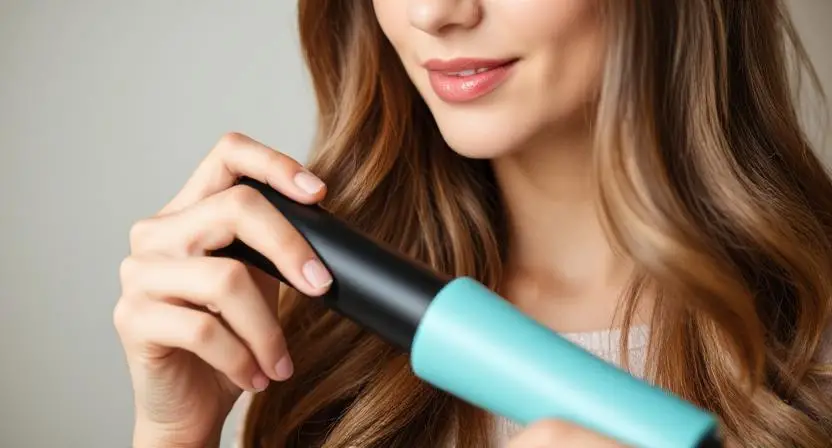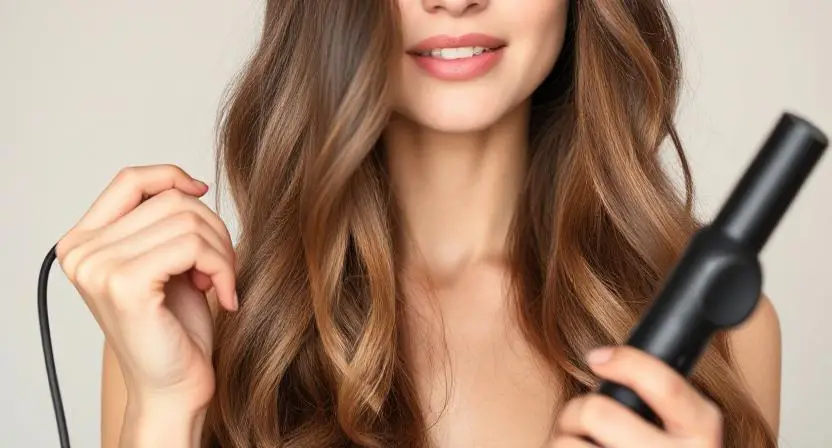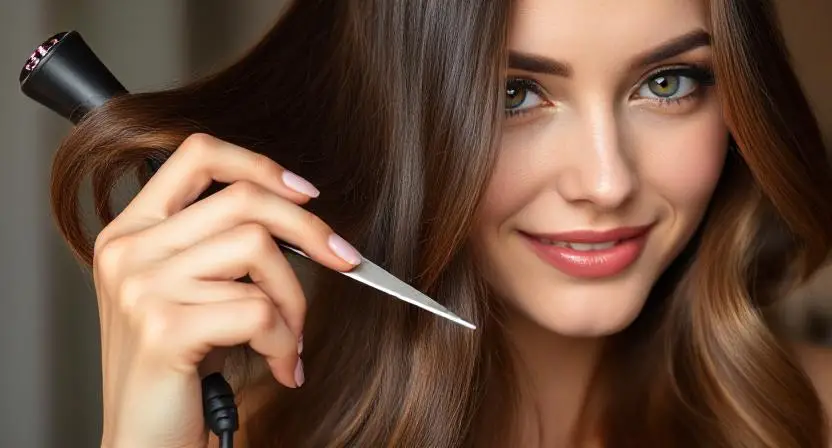Table of Contents
Heat styling tools like flat irons, curling wands, and blow dryers can transform your hair in minutes, but they can also cause significant damage over time. If your hair is dry, brittle, or frizzy from heat damage, you might be wondering if there’s a way to repair it without cutting off the damaged ends. The good news is, with the right care, you can restore your hair’s health and retain its length. In this comprehensive guide, we’ll walk you through how to repair heat-damaged hair without cutting, so you can enjoy healthy, shiny hair again.
What is Heat Damage?

Heat damage occurs when excessive heat from styling tools breaks down the hair’s protein structure, particularly the keratin that gives hair its strength and elasticity. This can lead to:
- Dryness and Brittleness: Hair loses moisture and becomes prone to breakage.
- Split Ends: The protective cuticle layer wears away, causing ends to split.
- Loss of Curl Pattern: Curly or wavy hair may lose its natural shape and become straight or frizzy.
- Dullness and Frizz: Hair loses its shine and becomes difficult to manage.
Understanding the signs of heat damage is the first step toward repairing it. Further you can follow this study: Effects of heat treatment on hair structure
Step-by-Step Guide to Repair Heat-Damaged Hair Without Cutting

- Assess the Damage
- Start by evaluating the extent of the damage. Mild damage may only require deep conditioning, while severe damage might need protein treatments and more intensive care.
Tip: Gently stretch a strand of wet hair. If it doesn’t bounce back or breaks easily, it’s likely damaged.
- Trim Split Ends (Minimally)
- While the goal is to avoid cutting, a light dusting of split ends can prevent further damage. Visit a stylist for a minimal trim, focusing only on the most damaged areas.
Tip: Regular trims every 6-8 weeks can help maintain healthy ends.
- Deep Condition Regularly
- Deep conditioning is essential for restoring moisture and elasticity to heat-damaged hair. Use a deep conditioning mask once or twice a week to nourish and repair your strands.
- How to Use: Apply the mask to damp hair, focusing on the mid-lengths and ends. Cover with a shower cap and leave it on for 20-30 minutes before rinsing.
Example Product: Olaplex No. 8 Bond Intense Moisture Mask is a highly effective treatment for damaged hair.
- Incorporate Protein Treatments
- Protein treatments help rebuild the hair’s structure by replenishing lost keratin. Use a protein treatment once a month to strengthen and repair your hair.
- How to Use: Apply the treatment to clean, damp hair and leave it on for the recommended time (usually 10-20 minutes). Rinse thoroughly and follow up with a moisturizing conditioner.
Example Product: Aphogee Two-Step Protein Treatment is a popular choice for repairing severe damage.
- Avoid Heat Styling
- Give your hair a break from heat tools to prevent further damage. Embrace heatless styling methods like braids, twist-outs, or roller sets.
Tip: If you must use heat tools, limit their use to once a week and always apply a heat protectant.
- Use Leave-In Treatments
- Leave-in conditioners and hair serums provide ongoing hydration and protection. They help seal the cuticle, reduce frizz, and prevent breakage.
- How to Use: Apply a small amount to damp hair, focusing on the ends. Comb through to distribute evenly.
Example Product: It’s a 10 Miracle Leave-In Product is a versatile option for damaged hair.
- Protect Hair from Further Damage
- When you do use heat tools, always apply a heat protectant spray or serum. Use the lowest heat setting possible and avoid holding the tool in one spot for too long.
Example Product: Tresemmé Thermal Creations Heat Tamer Spray is an affordable and effective option.
Recommended Products for Repairing Heat-Damaged Hair

Here are some highly recommended products to help repair heat-damaged hair:
- Deep Conditioner: Olaplex No. 8 Bond Intense Moisture Mask.
- Protein Treatment: Aphogee Two-Step Protein Treatment.
- Leave-In Conditioner: It’s a 10 Miracle Leave-In Product.
- Heat Protectant: Tresemmé Thermal Creations Heat Tamer Spray.
- Natural Oil: OGX Renewing Argan Oil of Morocco.
Natural Remedies for Heat-Damaged Hair

- DIY Avocado Hair Mask
- Mash one ripe avocado and mix it with 1 tablespoon of honey and 1 tablespoon of olive oil. Apply to damp hair, leave on for 30 minutes, then rinse. This mask provides intense hydration and nourishment.
- Hot Oil Treatment
- Warm 2-3 tablespoons of coconut or argan oil and massage it into your scalp and hair. Cover with a shower cap and leave on for 1 hour before shampooing. This treatment helps restore moisture and shine.
- Aloe Vera and Yogurt Mask
- Mix 2 tablespoons of aloe vera gel with 1/2 cup of plain yogurt. Apply to hair and leave on for 20 minutes before rinsing. This mask soothes the scalp and repairs damaged strands.
Tips to Prevent Future Heat Damage

- Limit Heat Styling: Use heat tools sparingly and opt for heatless styles whenever possible.
- Use Heat Protectants: Always apply a heat protectant before using any heat styling tools.
- Lower Heat Settings: Use the lowest effective heat setting on your tools to minimize damage.
- Invest in Quality Tools: High-quality tools with adjustable heat settings are less damaging than cheap alternatives.
Conclusion
Repairing heat-damaged hair without cutting is possible with patience and the right care. By following this comprehensive guide, using restorative products, and embracing natural remedies, you can restore your hair’s health and shine. Remember, prevention is key limit heat styling and always use a heat protectant to keep your hair looking its best.
5 FAQs With Answers
Can heat-damaged hair be repaired without cutting?
Yes, with consistent care, you can repair heat-damaged hair without cutting. Focus on deep conditioning, protein treatments, and avoiding further heat exposure.
How long does it take to repair heat-damaged hair?
Repairing heat-damaged hair can take several weeks to months, depending on the extent of the damage and how well you follow a restorative hair care routine.
What’s the best treatment for heat-damaged hair?
Deep conditioning treatments and protein masks are the most effective for repairing heat-damaged hair. Look for products with keratin, collagen, or hydrolyzed proteins.
Can I use heat tools after repairing my hair?
Once your hair is repaired, you can use heat tools occasionally, but always apply a heat protectant and use the lowest heat setting possible.
Are natural remedies effective for heat-damaged hair?
Yes, natural remedies like DIY hair masks and hot oil treatments can help restore moisture and strength to heat-damaged hair.

